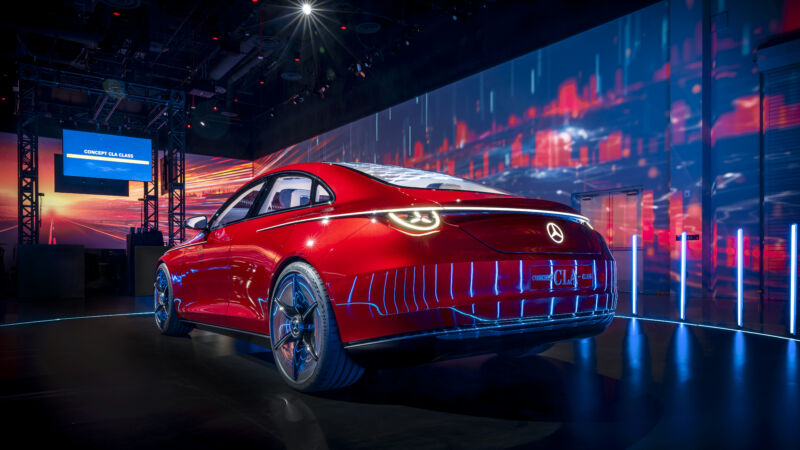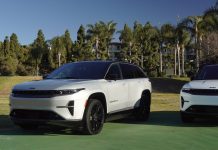Even Europe won’t be ready for EV-only sales in 2030, says M-B CEO Ola Kaellenius.

Mercedes-Benz is the latest automaker to dial back its electric vehicle ambitions. In 2021, the company published its electrification plan, which called for it to sell only battery EVs from 2030, at least in countries with the infrastructure to support that. Today, Mercedes published its annual results for 2023, and it’s clear that the company has little confidence that any region will be ready for EVs-only sales by that date.
Mercedes isn’t giving up on EVs, but it now says it only expects electrified vehicles—which include hybrid EVs as well as BEVs—to account for half its overall sales in the second half of this decade. While it says it is taking the necessary steps to go all-electric, it also “plans to be in a position to cater to different customer needs, whether it’s an all-electric drivetrain or an electrified combustion engine, until well into the 2030s.”
The change, evidently, has been percolating within Mercedes’ board rooms for some time. Last September, CEO Ola Kaellenius warned that even Europe would not be ready for an entirely electric lineup by 2030.
Global EV sales growth is slowing
For the EV evangelist, it’s yet another unfortunate example of corporations reacting to weakening demand among consumers, suggesting that EVs are yet another new technology that’s subject to the Gartner hype cycle, and one that’s moving from the peak of inflated expectations down into the trough of disillusionment.
Globally, sales rose by 31 percent in 2023, but that’s only half the rate of growth during 2022. Here in the US, established automakers like Ford and General Motors have already told investors that their EV plans were overambitious or focused on the wrong market segments, like full-size pickups, and this week saw startups Rivian and Lucid both forecast much-reduced production in 2024.Advertisement
You can’t just blame car dealers for this
It’s tempting to try to find a single reason for this growth in EV pessimism—unsympathetic actors like car dealers flush with record profits complaining about having to learn to sell something new make for easy villains in this story. But those car dealers are a uniquely American problem.
In part, BEVs remain a little too unfamiliar for a large swath of the general public to make them feel comfortable spending tens of thousands of dollars or euros. Every EV owner who can charge at home knows they usually wake up to a full battery each morning, but that’s a difficult idea to grasp for people conditioned to visiting a gas station every week or so, even if they can charge at home.
Those gas station visits have also made drivers expect to be able to refuel in a few minutes, something that just isn’t possible with even the fastest fast-charging BEVs. And it’s hard to deny that fast-charging infrastructure is inadequately distributed.
EVs also remain significantly more expensive than cars with internal combustion engines. That’s entirely due to the price of lithium-ion batteries; once these break below the $100/kWh threshold, an EV powertrain should reach price parity with an ICE setup.
While prices do continue to decrease, that’s not happening nearly fast enough. In November, BloombergNEF’s battery price survey found that prices had dropped 14 percent year on year, but at $139/kWh, it’s not hard to see why a BEV costs thousands of dollars more than an otherwise-identical gasoline-powered model.
Instead, we can expect to see a greater proliferation of hybrid EVs and PHEVs. Hybrid powertrains in particular provide a cost-effective, efficient alternative to just burning liquid hydrocarbons, and in terms of reducing fleet carbon emissions, OEMs like Toyota say they can make 90 HEVs using the same raw materials as one BEV or six PHEVs, leading to a 37-fold reduction in lifetime carbon emissions.




